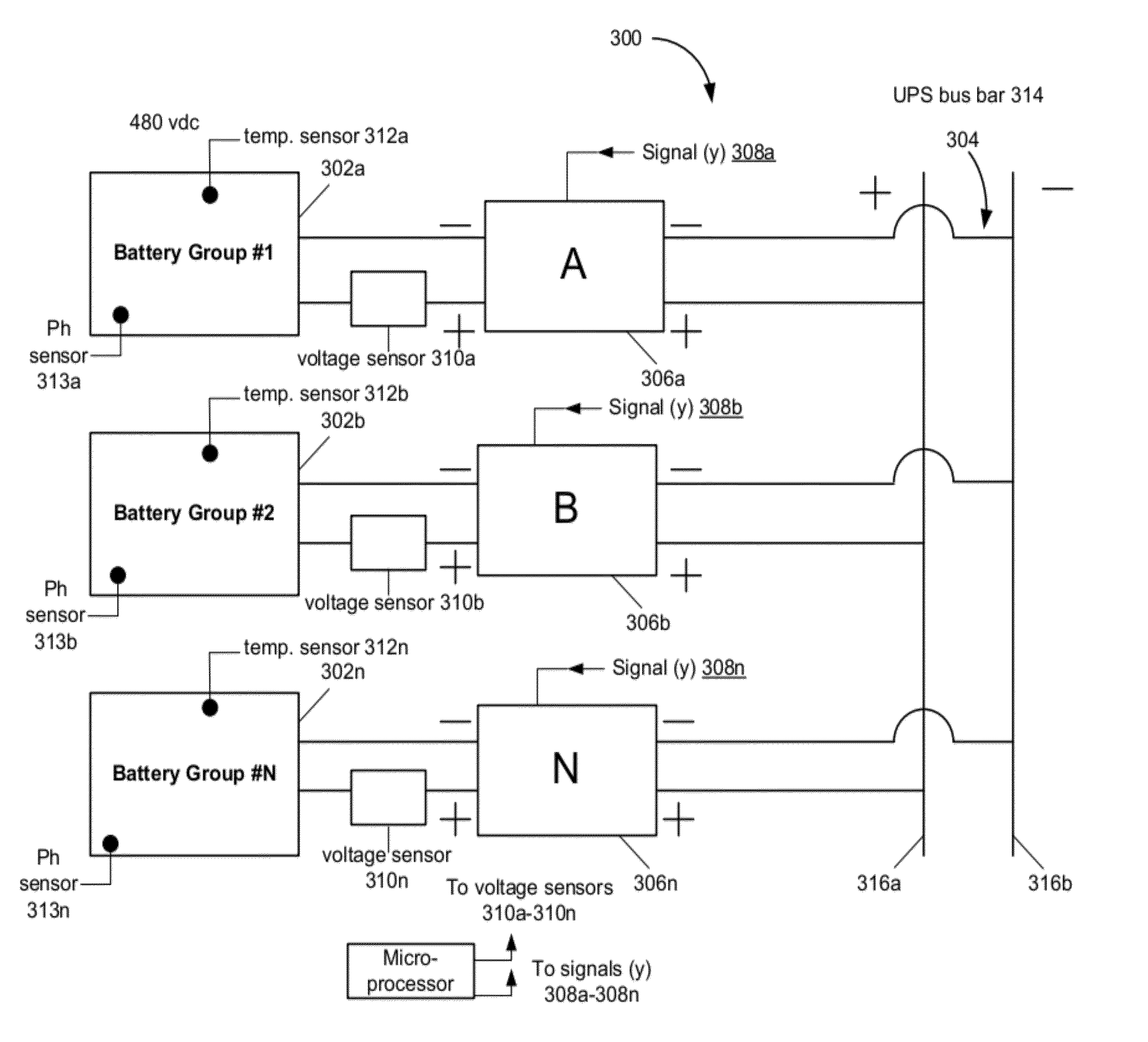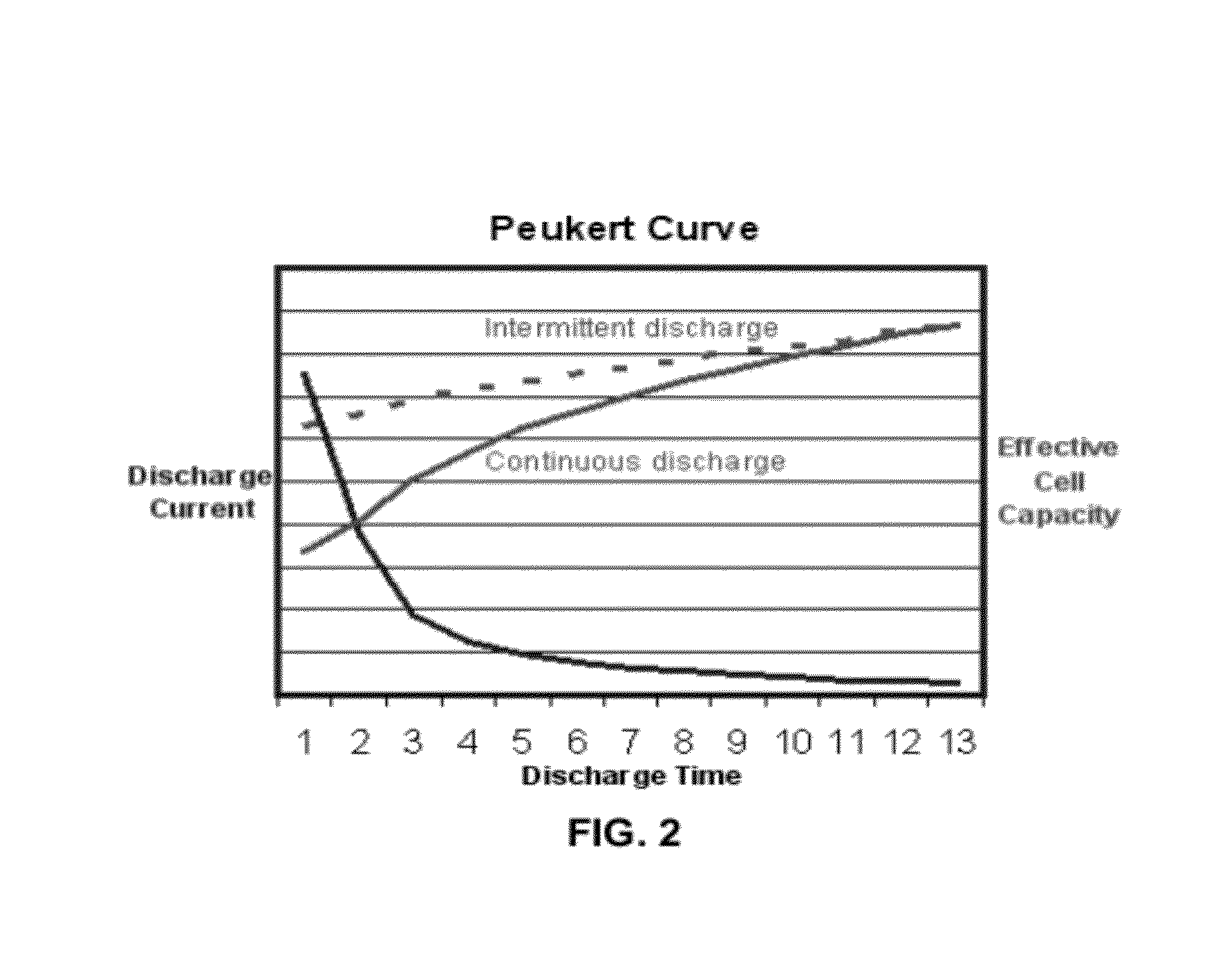Data center battery enhancement method and system
- Summary
- Abstract
- Description
- Claims
- Application Information
AI Technical Summary
Benefits of technology
Problems solved by technology
Method used
Image
Examples
Embodiment Construction
[0033]A consequence of Peukert's Law is that when a battery is discharged at its rated discharge rate, significantly more power may be made available over time. The battery may be discharged at a lowest rate possible, which is slightly above the battery's “self-discharge” rate.
[0034]FIG. 2 is a graph illustrating Peukert's curve in terms of effective cell capacity as measured by discharge current over discharge time. FIG. 2 illustrates that effective battery capacity is radically reduced at very high continuous discharge rates. However, with intermittent use, a battery may have time to recover during quiescent periods when its chemistry at the electrolyte cell interface has recovered due to diffusion and its temperature returns to an ambient level. Because of this potential for recovery, UPS run time capacity may be improved and operating efficiency may be increased (or fewer batteries may be needed or the same number of battery groups may be employed but with a smaller amp hour cap...
PUM
 Login to View More
Login to View More Abstract
Description
Claims
Application Information
 Login to View More
Login to View More - R&D
- Intellectual Property
- Life Sciences
- Materials
- Tech Scout
- Unparalleled Data Quality
- Higher Quality Content
- 60% Fewer Hallucinations
Browse by: Latest US Patents, China's latest patents, Technical Efficacy Thesaurus, Application Domain, Technology Topic, Popular Technical Reports.
© 2025 PatSnap. All rights reserved.Legal|Privacy policy|Modern Slavery Act Transparency Statement|Sitemap|About US| Contact US: help@patsnap.com



